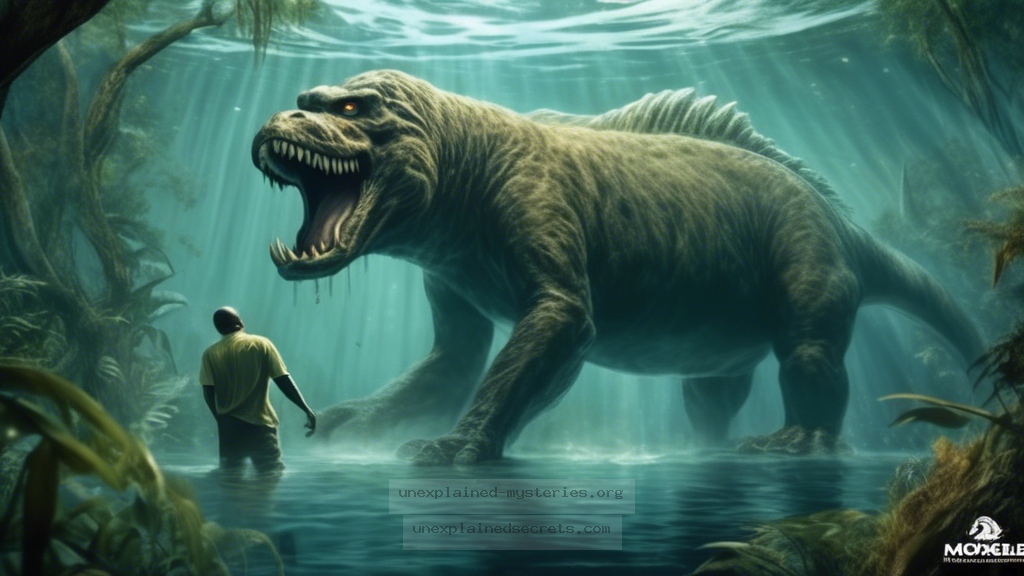What Secrets Lie Behind the Mokele-Mbembe: The Legend of the Congo River Beast?
What Secrets Lie Behind the Mokele-Mbembe: The Legend of the Congo River Beast?
The Mokele-Mbembe has captivated the imagination of cryptozoologists, adventurers, and enthusiasts of the unexplained for generations. This legendary creature, often depicted as a massive, dinosaur-like beast inhabiting the Congo River basin, raises profound questions about the existence of undiscovered species and the mysteries of our natural world. Why does the legend persist? What evidence supports its existence? This blog post delves into the enigma of the Mokele-Mbembe, exploring its historical context, core theories, and the practical implications of its continued fascination.
Historical Context: The Roots of the Legend
The Mokele-Mbembe legend originates from the folklore of the Bakongo people, an ethnic group native to the Congo region. Descriptions of the creature vary widely, but it is commonly portrayed as a large, herbivorous animal resembling a sauropod dinosaur, approximately the size of an elephant. Historical accounts of encounters with the Mokele-Mbembe date back to the late 19th century when European explorers began to document local myths.
One of the earliest recorded mentions was made by French explorer Pierre Savorgnan de Brazza, who noted the existence of a creature resembling a dinosaur during his expeditions in the late 1800s. This account piqued the interest of the scientific community and fueled speculative discussions about prehistoric creatures surviving in remote areas of Africa.
Core Concepts: What is the Mokele-Mbembe?
The term “Mokele-Mbembe” translates to “one who stops the flow of rivers,” which suggests a creature of tremendous size and power. According to various reports, this beast resides in the swamps and rivers of the Congo Basin, often described as a semi-aquatic, long-necked creature that uses its massive tail to create whirlpools in the water. Supporters of the Mokele-Mbembe theory often draw parallels to the long-necked sauropods of the Mesozoic era, proposing that this creature could be a living relic from a bygone age.
Investigations into the Mokele-Mbembe have been both scientific and anecdotal, with eyewitness accounts often featuring reports of large footprints, unusual disturbances in the water, and sightings of the creature itself. Despite these accounts, the lack of physical evidence has led many to regard the Mokele-Mbembe as a myth rather than a reality.
Practical Implications: Evidence for Existence
While the Mokele-Mbembe remains elusive, several expeditions have sought to uncover evidence of its existence. Notable among these was the 1985 expedition led by Dr. Roy P. Mackal, a biologist from the University of Chicago. Mackal’s team conducted interviews with local villagers and gathered anecdotal evidence, though they failed to find conclusive proof of the creature. Despite this, the expedition popularized the search for the Mokele-Mbembe and inspired further investigations.
In recent years, advances in technology have allowed researchers to explore the Congo Basin more thoroughly. Drones, camera traps, and environmental DNA (eDNA) analysis have become essential tools in the quest to discover undiscovered species. While no definitive evidence of the Mokele-Mbembe has yet been found, the ongoing efforts reflect a broader interest in cryptozoology and the potential for scientific discovery in unexplored habitats.
Alternative Perspectives: Skepticism and Critique
While many enthusiasts passionately defend the possibility of the Mokele-Mbembe’s existence, skeptics argue that the lack of physical evidence, combined with the prevalence of folklore and myth, suggests that the creature is more likely a figment of cultural imagination rather than a biological reality. Critics often point to the psychological phenomenon known as “pareidolia,” where individuals perceive familiar patterns, such as animals, in random stimuli.
Additionally, the challenges of navigating the dense jungles of the Congo and the risks associated with exploration in such remote areas contribute to the difficulty of obtaining conclusive evidence. The skepticism surrounding the Mokele-Mbembe often highlights the need for rigorous scientific standards in cryptozoological investigations.
Common Misconceptions and Clarifications
One common misconception is that the Mokele-Mbembe is inherently a dinosaur. While it is often compared to sauropods, the actual classification of the creature is uncertain. The Mokele-Mbembe is a mythical and folkloric entity, and its form may have evolved over time, influenced by cultural narratives and local beliefs.
💡 **Notable Fact:** Many cryptids, including the Mokele-Mbembe, often reflect the cultural and environmental context of the regions they inhabit. They serve as allegories for local fears and mysteries.
Another misconception is that all reports of the Mokele-Mbembe should be taken at face value. Eyewitness testimonies can be influenced by various factors, including environmental conditions, psychological states, and social dynamics. Understanding the context of these reports is essential for forming a balanced view of the creature’s existence.
Best Practices for Investigation or Study
For those interested in investigating the Mokele-Mbembe or other cryptids, several best practices can enhance the reliability of findings:
- Engage with Local Communities: Building relationships with local populations can provide valuable insights and enhance the credibility of the investigation.
- Use Technology: Employing modern tools like drones, camera traps, and eDNA analysis can yield more reliable data, increasing the chances of finding evidence.
- Document Everything: Maintaining meticulous records of observations, interviews, and environmental conditions is crucial for validating findings.
- Collaborate with Scientists: Partnering with biologists, ecologists, and anthropologists can lend scientific rigor to the investigation and help bridge the gap between folklore and reality.
Future Developments: Ongoing Research and Exploration
The quest for the Mokele-Mbembe remains an active area of interest within the cryptozoological community. As technology advances and more researchers venture into the Congo Basin, the potential for discovery increases. Ongoing studies of other cryptids, alongside environmental conservation efforts, may also yield new insights into the biodiversity of the region, perhaps bringing the Mokele-Mbembe closer to reality.
Moreover, interdisciplinary approaches that incorporate folklore, anthropology, and environmental science could enrich our understanding of the Mokele-Mbembe legend and its cultural significance. This holistic view may help bridge the gap between myth and science.
Conclusion: The Enduring Mystery of the Mokele-Mbembe
The Mokele-Mbembe continues to be a fascinating subject within the realm of cryptozoology, representing the intersection of myth, science, and the unknown. Despite the skepticism surrounding its existence, the ongoing pursuit of evidence reflects a deep human curiosity about the world and the secrets it may still hold. As we continue to explore the uncharted territories of our planet, the legend of the Mokele-Mbembe serves as a reminder of the mysteries that remain and the potential for discovery that lies ahead.
In summary, whether viewed as a myth, a relic of the past, or a yet-to-be-discovered species, the Mokele-Mbembe encapsulates the essence of exploration and the thrill of the unknown. As we push the boundaries of our understanding, the possibilities are endless, inviting us to keep searching for answers in the heart of darkness.
Other Articles
Recent Posts
- What Happened to Flight MH370? The Conspiracy Theories That Still Haunt Us
- What Secrets Lurk Within the Walls of the Infamous Trans-Allegheny Lunatic Asylum?
- What Evidence Supports the Existence of Bigfoot in the Pacific Northwest?
- What Happened to the Indus Valley Civilization? Unraveling the Mysteries of Ancient Urban Life
- Can Telepathy Be Scientifically Proven Through Laboratory Evidence?







